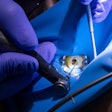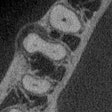Using a microscope during root canal treatment may improve outcomes and aid in handling complex cases with a more favorable prognosis, according to a study recently published in the Journal of Dentistry.
Furthermore, microscope-assisted root canal treatment (RCTx) may significantly improve preoperative pain, reduce apical lesions, and increase the rate of successful patient outcomes, the authors wrote.
“We uncovered that microscope-assisted RCTx may contribute to complete apical healing and tooth functionality,” wrote the authors, led by Ya-Ching Chang of the MacKay Memorial Hospital Department of Endodontics in Taiwan (J Dent, April 21, 2025).
This retrospective cohort study analyzed 337 teeth from 301 patients who received microscope-assisted RCTx and 298 teeth from 256 patients who underwent treatment of posterior teeth without a microscope between July 1, 2016, and August 11, 2023, they wrote.
The study assessed treatment success and prognostic factors, comparing outcomes between treatment with and without a microscope. Treatment success was evaluated using both strict criteria (no pain, no clinical inflammation, and a healed apical area with a normal periodontal space) and loose criteria (no pain, no clinical inflammation, and a healed or healing apical area).
Significant differences were found based on factors such as the number of roots and canals, the presence of extra canals, swelling, sinus tract, palpation pain, deep and narrow pockets, apical lesion size, root resorption, secondary root canal treatment (2° RCTx), and periapical diagnosis (p < 0.05).
Cases with preoperative apical lesions smaller than 5 mm and those 5 mm or larger had odds of success that were 0.16 and 0.06 times lower, respectively, than cases without apical lesions (p < 0.001). The odds of success for secondary RCTx were 0.35 times those of primary RCTx (p < 0.001), they wrote.
Additionally, apical lesion size, treatment type, and use of a microscope were all significantly associated with success based on strict criteria (p < 0.001), while microscope-assisted RCTx was also significantly linked to success under loose criteria (p < 0.05).
However, the study had limitations, including the use of a nonrandom sample. Further randomized clinical trials should be conducted to better understand the effect of multiple factors on RCTx outcomes, the authors added.
“This treatment strategy may help manage difficult root canal referral cases, leading to a better prognosis,” Chang and co-author Ting-Ya Wang concluded.




















